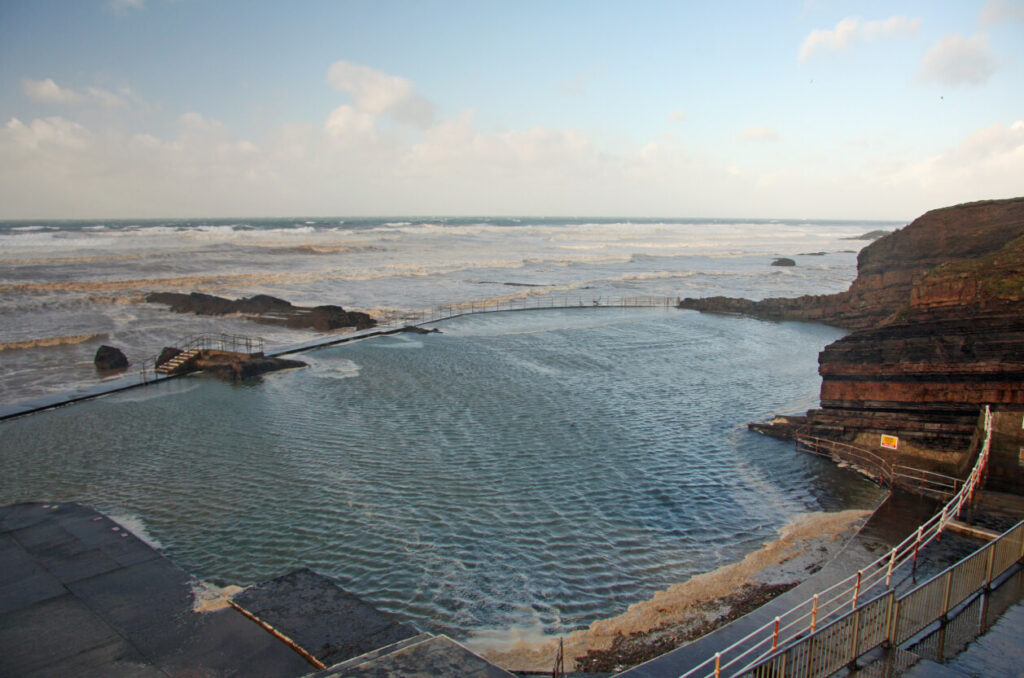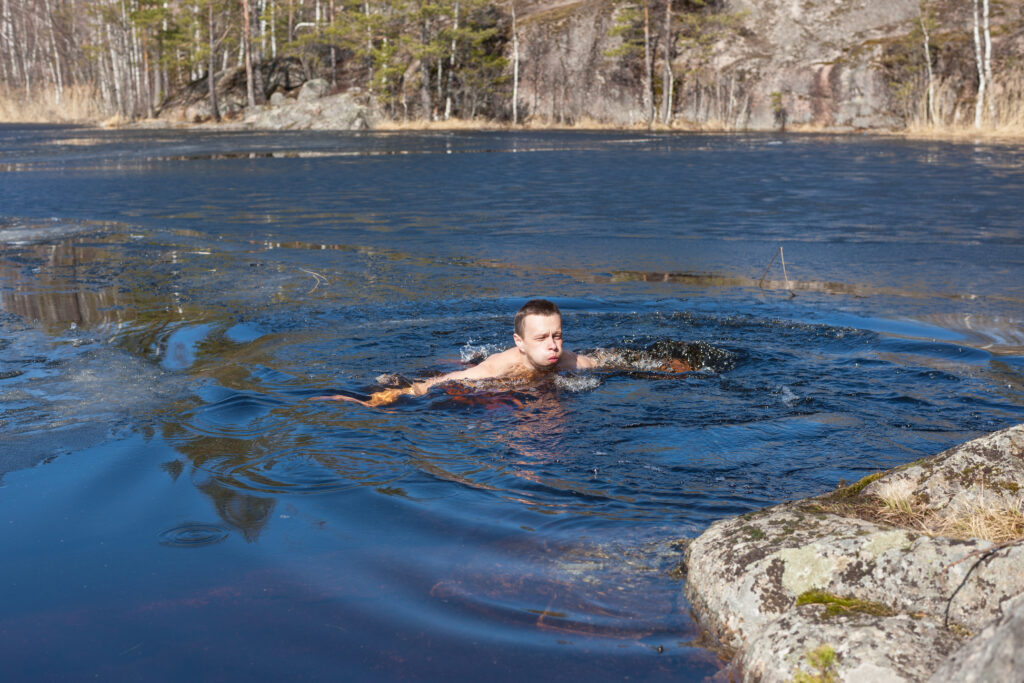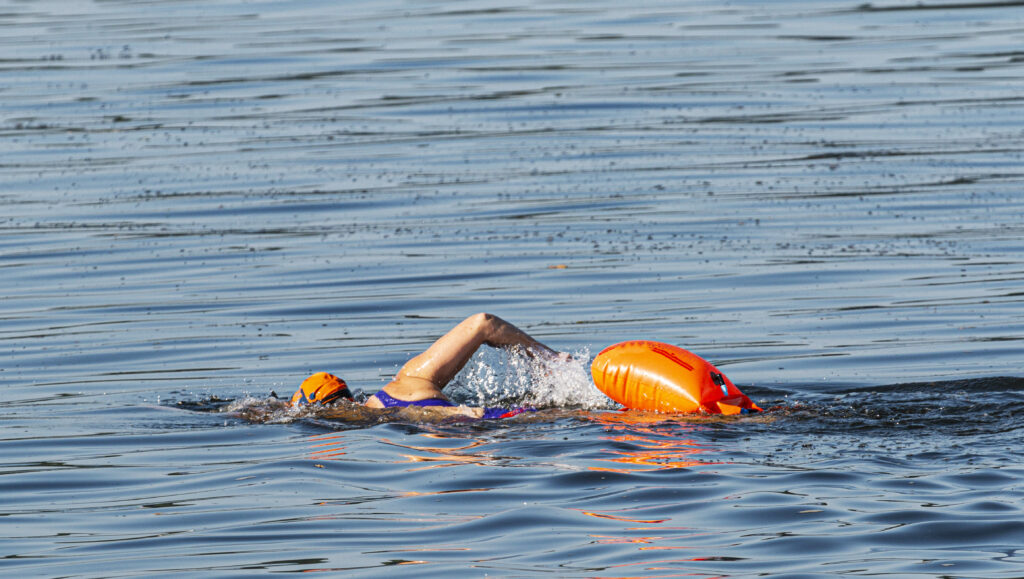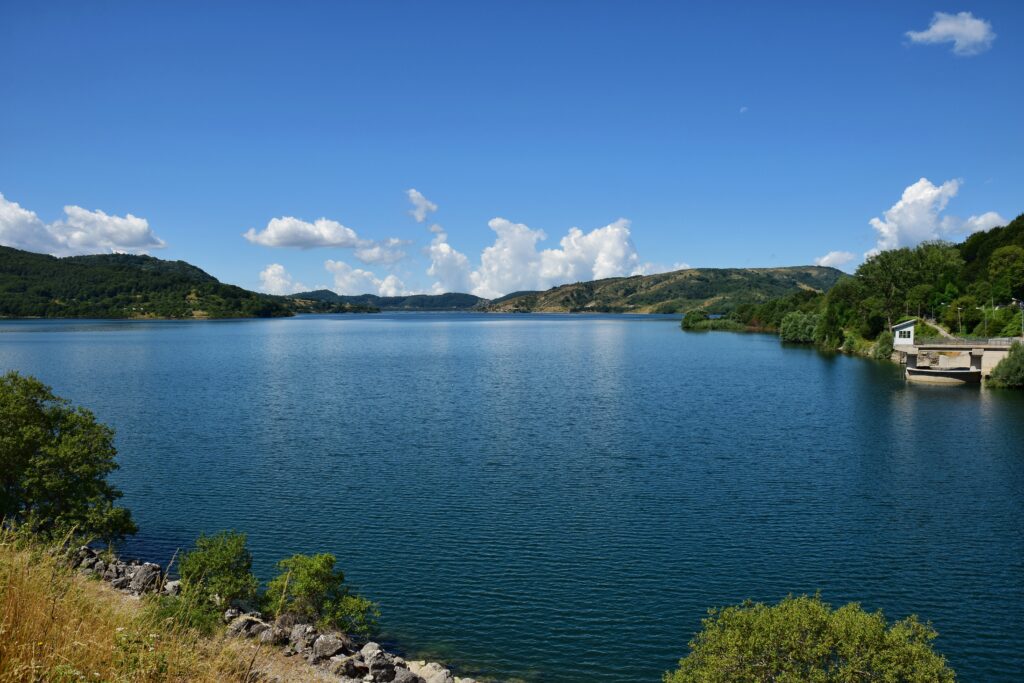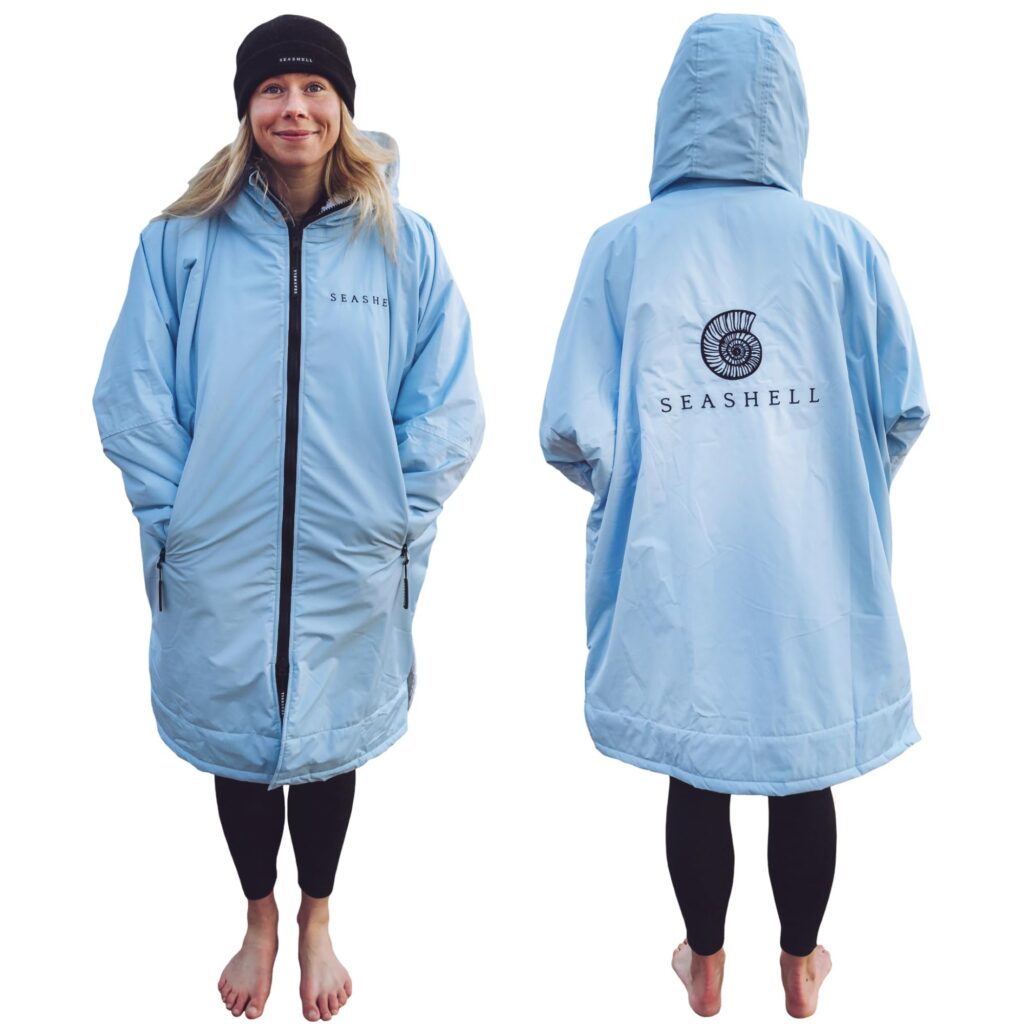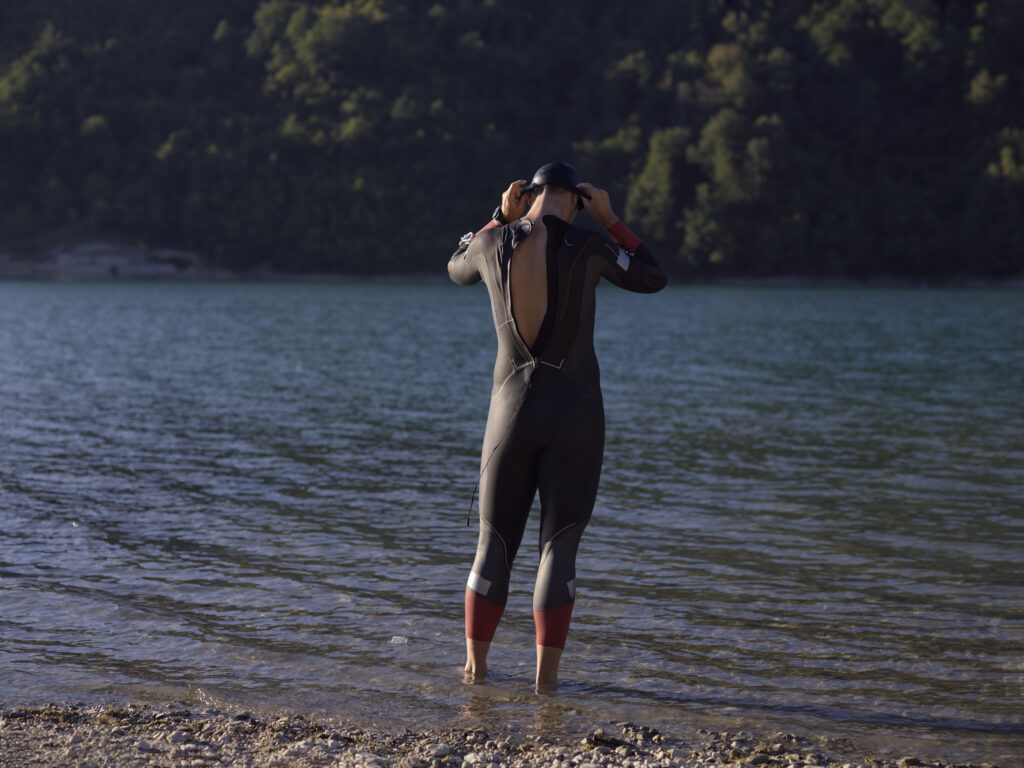Open sea swimming in the United Kingdom presents a unique set of challenges, particularly regarding water temperature. Even in summer, the sea temperatures around the UK can be brisk, with general temperatures ranging from 15°C to 20°C. These temperatures are a key consideration when deciding whether a wetsuit is necessary for open water swimming.

Wetsuits are not just a matter of comfort; they provide essential benefits such as increased buoyancy and thermal protection. According to Swim England’s guidance on wearing wetsuits, wetsuits are compulsory for water temperatures below 18°C. However, when the water temperature is between 18°C and 20°C, it’s up to the swimmer’s preference. The ability to choose comes from the balance between the advantages of a wetsuit and the desire for a more natural swimming experience.
For swimmers looking to engage in open sea swimming during the UK summer, the decision to wear a wetsuit can depend on several factors, including individual tolerance to cold, the duration of the swim, and personal goals. It’s important to note that circumstances such as sea temperature and personal comfort levels vary greatly, and what suits one swimmer may not be ideal for another. With safety as the primary priority, consulting experts and considering one’s own abilities and health is crucial before taking the plunge.
Understanding Wetsuits for Open Water Swimming in the UK
Choosing the right wetsuit for open water swimming in the UK is essential, as the right selection can significantly influence one’s comfort, buoyancy, and flexibility. The variable British summer water temperatures necessitate considering wetsuit features and materials for an optimal swimming experience.
Key Features of Swimming Wetsuits
When selecting a swimming wetsuit, it’s important to look for specific features engineered for swimmers’ needs. Comfortable fit around torsos, shoulders, wrists, and ankles is crucial to prevent chafing and ensure maximum range of motion. A good wetsuit should offer buoyancy to maintain the correct body position in the water, along with thermal protection. Additionally, flexibility in critical areas like the shoulders is important for unimpeded arm movement during strokes.
Wetsuit Materials and Neoprene Quality
The primary material used in a wetsuit is neoprene, a synthetic rubber that provides insulation and buoyancy. Higher quality neoprene often features a greater number of air bubbles, which enhance both buoyancy and warmth. The neoprene quality can vary significantly between different wetsuit brands and affects the overall performance and durability of the wetsuit.
Wetsuit Fit and Sizing Considerations
A specific wetsuit size should fit snugly without being overly constrictive, allowing for a full range of movement while minimising water ingress. The neoprene should sit flush against the skin around all extremities to prevent flushing – where cold water enters and exits the suit. Proper sizing is especially important in colder UK waters where thermal protection is essential, and for events like triathlons where transition times are critical.
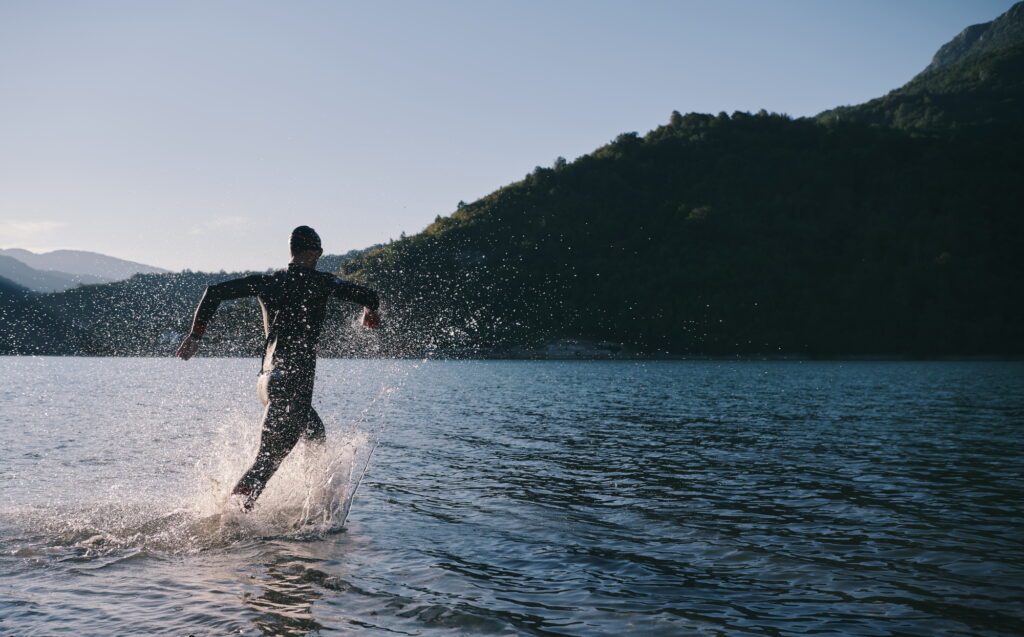
The Role of Water Temperature in Wetsuit Use
When considering open sea swimming in the UK during the summer, the vital elements to consider are the temperature of the water, which varies depending on location and the season, and the impact this has on swimmers in terms of warmth and safety.
Understanding Water Temperature Variations
Water temperature plays a critical role in determining the need for a wetsuit. In the UK, summer sea temperatures can range from relatively cool to moderately warm. The Met Office provides a weather forecast that includes sea temperatures, which can be instrumental for swimmers to plan appropriately. Typically, coastal waters in the UK during the summer may still have temperatures that warrant the use of a wetsuit for most individuals. For example, the average water temperature in July can hover around 15°C, which may feel quite brisk especially in northern regions.
Cold Water Effects and Swimmer Safety
Swimming in cold water without adequate protection can lead to cold water shock. This immediate and involuntary gasp reflex caused by sudden immersion in cold water can pose a grave safety risk, leading to panic and even drowning. Insulation provided by a wetsuit is essential not just for warmth but also to prevent the dangers associated with cold water shock. The neoprene material of wetsuits creates a barrier that helps conserve body heat by trapping a layer of water next to the skin, which is then warmed by the body. This process is crucial for maintaining core body temperature and preventing hypothermia, a serious risk in unanticipated cold waters.
Physical Benefits of Wetsuits
Wearing a wetsuit while participating in open water swimming can significantly enhance performance and provide safety benefits. These suits offer improved buoyancy, speed, and protection, which can be particularly advantageous for swimmers braving the colder waters of the UK during summer.
Buoyancy and Speed Enhancement
One of the key advantages of a wetsuit is its ability to increase buoyancy. This is primarily due to the neoprene material used in the construction of the suit, which reduces the amount of energy a swimmer expends to stay afloat. This added buoyancy assists in maintaining a streamlined position in the water, contributing to greater speed and efficiency. Swimmers find that they can glide through the water with less effort, making the swim more comfortable and conserving energy for longer distances.
Protection Against Natural Elements
Wetsuits serve as a protective barrier against various natural elements. The neoprene provides warmth by trapping a thin layer of water between the suit and the skin, which is then warmed by body heat. This is especially important in the typically cooler British waters, even during summertime. Additionally, wetsuits can offer protection for the back, neck, and other exposed parts of a swimmer’s body against potential abrasions from marine life or debris. Safety is further enhanced by the visibility a wetsuit provides, making swimmers more noticeable in open waters.
Safety and Visibility in Open Water Environments
In open water swimming, especially in the diverse conditions found around the UK, understanding the dynamic aquatic environment and ensuring high visibility are paramount for swimmer safety.
Adapting to Sea Conditions and Predicting Hazards
Adaptation to sea conditions is crucial as the ocean is subject to variable tides and currents. Swimmers should apprise themselves of local tidal patterns and be aware of the presence of potential rip currents, which are powerful, narrow channels of fast-moving water that can pose serious risks. Checking the forecast and being aware of changes that could affect sea states allow one to better predict hazards and stay safe.
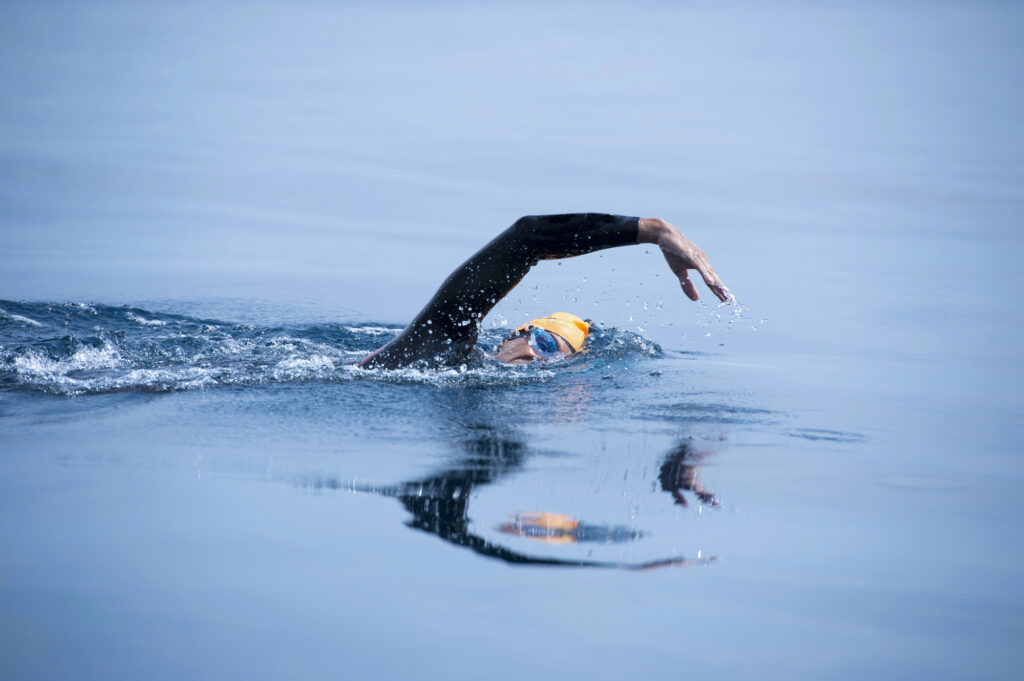
Importance of Visibility Aids and Swimming Accessories
Visibility aids are essential when swimming in open water to increase a swimmer’s conspicuousness to lifeguards, boaters, and other swimmers. A brightly coloured swimming hat, typically made from silicone, can significantly enhance visibility. Additional accessories like goggles for clear vision and a tow float for resting and signalling in case of distress support both safety and visibility in open water environments. It’s important that these items are not only functional but also noticeable in colour.
Regulations and Recommendations for Wetsuit Usage
When swimming in open water during the summer in the UK, understanding the latest regulations and being aware of when it’s best to hire or purchase a wetsuit can improve one’s experience significantly.
FINA Regulations and Triathlon Rules
FINA, the international governing body for aquatic sports, sets specific guidelines for wetsuit usage during competitions. According to Swim England, the regulations stipulate that for water temperatures above 20°C, wetsuits are not necessary. If the temperature falls between 18°C and 19.9°C, it is at the swimmer’s discretion to wear one. For waters between 16°C and 17.9°C, wetsuits become compulsory, and below 15.9°C, competition is not recommended.
In triathlons, rules regarding wetsuits can vary but are often aligned with safety and fairness principles. The USA Triathlon events operate under the guideline that wetsuits are permitted in water temperatures ranging from 16°C to 25.5°C. When the temperature rises above 25.5°C but is below 29°C, wearing a wetsuit disqualifies participants from award eligibility. Above 29°C, the use of wetsuits is prohibited.
When To Hire Vs When To Buy a Wetsuit
Whether to hire or buy a wetsuit depends on an individual’s frequency of use and personal preference. Hiring a wetsuit can be a cost-effective solution for those trying open water swimming for the first time or participating in a one-off event. Purchasing a wetsuit becomes more economical for regular swimmers, ensuring a perfect fit and the availability of the best wetsuits tailored to their needs.
For triathletes or competitive swimmers, owning a wetsuit that meets FINA’s regulations offers the advantage of consistency and reliability during events. It is also essential that the wetsuit provides adequate flexibility and doesn’t hinder performance – a factor that might be more controllable when one opts to buy rather than hire.
Swimming Techniques and Training in Wetsuits
When wearing a wetsuit for swimming in open waters, swimmers can optimise their technique and performance. The aim is to remain flexible while incorporating additional gear into their training routines.
Optimising Swimming Technique
A wetsuit alters buoyancy, hence swimmers must adapt their technique accordingly. Primarily, they should focus on maintaining a horizontal position in the water, which reduces drag and conserves energy. For breaststroke enthusiasts, the focus should be on a strong glide phase, as the added buoyancy of a wetsuit facilitates longer, more efficient glides between strokes.
To maximise performance, swimmers should ensure the wetsuit fits snugly without restricting movement. Regular drills designed to enhance propulsion and stroke technique are necessary. These drills often place emphasis on high elbow recovery and an increased rate of arm turnover.
Training with Additional Gear
Incorporating gear such as a tow float is beneficial for safety and can serve as a marker during training. A tow float does not impede swimming but provides visibility to other water users, which is particularly important in busier areas.
Additional training aids may include paddles, fins, and pull buoys. These tools can help build strength and fine-tune technique. For instance, pull buoys aid in isolating upper body movements, allowing swimmers to focus on arm technique and build upper body strength. Using these aids in a structured training program helps ensure that swimmers can translate the strength and technique they build into wetsuit swimming with ease.
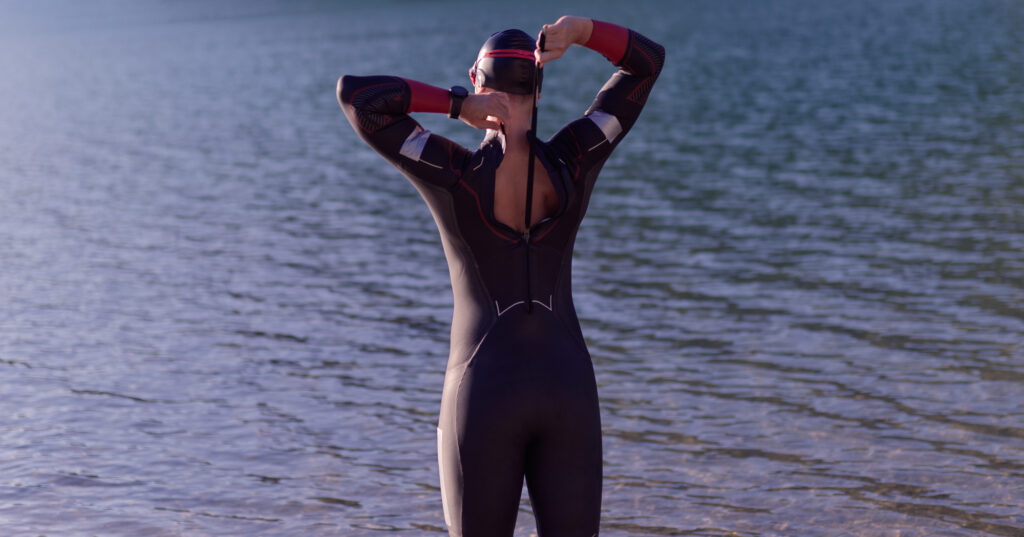
Personal Experiences and Preference
When discussing the necessity of a wetsuit for open sea swimming in the UK during the summer, it’s crucial to consider the diversity of experiences from various swimmers and personal preferences that dictate their choices.
Swimmer Anecdotes and Reviews
Many swimmers in the UK recount that, despite the warmer temperatures in summer, the British waters can still be quite cool, and wearing wetsuits provides both thermal protection and increased buoyancy. Reviews often highlight how a specific wetsuit improved their open water experience, citing factors such as comfort and flexibility. One must read through a variety of anecdotal experiences to gauge the general sentiment. For instance, some swimmers feel that a wetsuit is essential, especially when engaging in longer sessions, whereas others prefer the feeling of freedom that comes with swimming without one.
Identifying Your Wetsuit Needs
The selection of a wetsuit is often based on personal preference and the swimmer’s sensitivity to cold. The following factors should be assessed:
- Water Temperature: Even in summer, temperatures can vary. Check local guidance such as Swim England’s rules on wetsuit usage based on water temperature.
- Fit and Comfort: A well-fitted wetsuit should be snug but not constrictive, allowing for full range of movement.
- Swimming Goals: Are you training for an event, or is it for casual swimming? The goal may dictate the need for varying levels of thermal protection and buoyancy.
- Material and Thickness: Depending on the swimmer’s preference for warmth and buoyancy, wetsuits come in varying thicknesses, usually between 3mm and 5mm, aiding in different swimming conditions.
It is recommended that swimmers try multiple wetsuits to find the one that best suits their needs, taking into account the recommendations from fellow open water enthusiasts.
Frequently Asked Questions

The following FAQs address common concerns around the use of wetsuits for open water swimming in the UK, with an emphasis on beginners, varying temperatures, and safety considerations.
What is the recommended wetsuit for beginners in UK open water swimming?
Beginners should opt for a wetsuit that balances comfort and buoyancy. A thickness between 3mm and 5mm is often recommended, providing both warmth and flexibility.
Which wetsuit is best suited for swimming in cold UK waters?
For colder UK waters, wetsuits with thicker neoprene, around 5mm to 7mm, are best suited to provide adequate insulation and protection against the chill.
Is it necessary to wear a wetsuit for open water swimming in the UK during summer?
While not strictly necessary, wearing a wetsuit can offer additional buoyancy and warmth, which can be beneficial for comfort and safety, even in summer.
What are the advantages of wearing a wetsuit when swimming in cold water?
Wetsuits trap a thin layer of water against the skin that warms up, thereby insulating the swimmer. They also increase buoyancy, reduce drag, and can provide some protection from jellyfish and other irritants.
What should one wear for open water swimming to ensure safety and comfort?
Alongside a suitable wetsuit, swimmers should consider wearing a brightly coloured swim cap for visibility, goggles to protect the eyes, and a tow float to rest and signal for help if necessary.
How does one determine the appropriate wetsuit size for open water swimming?
An appropriate wetsuit size should fit snugly to prevent excess water from flowing through, but not so tight that it restricts movement. One may seek professional fitting advice or refer to specific brand size charts for guidance.

